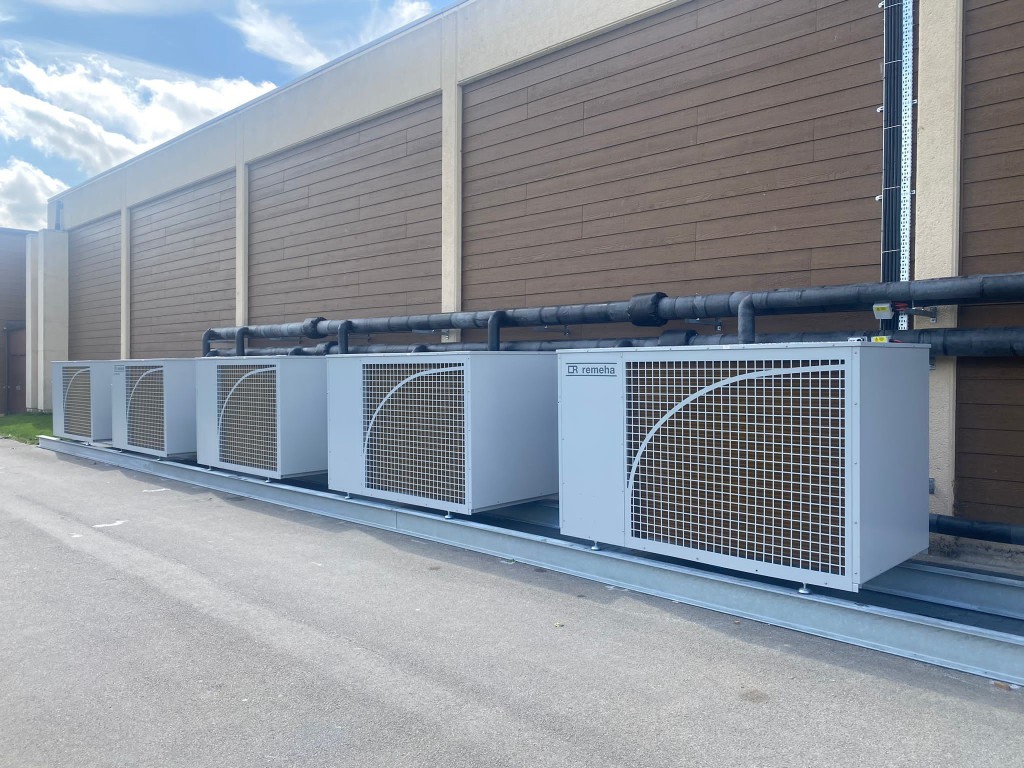Sustainability in schools

Baxi’s Commercial Sales and Specification Director Rob Erwood discusses some of the approaches to tackling the net zero challenge.
Faced with ambitious government decarbonisation targets and inflated energy prices, sustainability has become an increasingly hot topic for schools, with the heating system a frequent target for improvement, especially in older school buildings.
It is well recognised that decarbonising heat in schools and other public sector buildings is critical if the UK is to achieve its net zero ambition. Ultimately, the goal is to transition to low- carbon heating and hot water technologies such as heat pumps and electric water heaters.
But while new buildings will be optimised for net zero, refurbishing the ageing heating systems that older school estate typically relies on can be a more complex task. A whole range of factors, from the variety of building type and heating systems to available funding and time constraints, will all influence how quickly and easily this can be achieved.
That said, while there may be challenges there are also plenty of opportunities for school managers to drive a more sustainable operation. It’s worth considering some of the different options available to schools at varying phases of the decarbonisation journey.
All-electric approach
Where possible, consider an all-electric approach. Air source heat pumps can provide a highly efficient, sustainable method of supplying low carbon heating or hot water requirements. Air source heat pumps (ASHP) are frequently regarded as the most popular and cost-effective choice of heat pump.
With an exceptionally high seasonal co-efficient of performance (SCOP) of up to 400%, they can deliver up to 4kW of heat output for every 1kWh of electricity used to run the heat pump.
Plot a Net Zero pathway
The merits of heat pumps are well established but they are not a panacea. Spending the entire budget on a heat pump to decarbonise a draughty old building without any other preparation will not necessarily guarantee success.
As a poorly-performing heat pump will result in high running costs, an inadequately heated building and unreliable heating and hot water, it’s clearly a scenario to be avoided at all costs. Similarly, it is not best practice to default to recommending high temperature heat pumps without first considering how to reduce energy usage and heat losses within the building.
The starting point should be to work with the school to identify the immediate, medium and long-term goals, as well as the available time to complete the work, the budget and any funding opportunities.
This will make it possible to plan out and design the phased stages of refurbishment.
Plotting a pathway to net zero also has the advantage of enabling forward budgeting while ensuring good practice design for maximum energy, carbon and cost reductions at each stage.
Reduce energy demand
The immediate consideration when addressing existing buildings should always be to reduce operational energy usage and energy losses. Understanding where and how energy is being used will help determine any opportunities for improvement and how and where ASHPs can best be used.
Implementing passive measures such as roof and wall insulation, draught proofing and improving the thermal performance of windows and doors, will reduce heat losses and result in an immediate drop in energy usage.
Energy efficiency
Energy efficiency is absolutely critical to reducing emissions, especially when dealing with existing buildings.
Where energy consumption in buildings is higher than expected, it is often because of issues with building management systems and controls, so this is an area where quick-win energy and emissions savings can often be made.
One practical means of maintaining efficient building operation at an early stage of the decarbonisation process might be to replace ageing plant with reliable, low NOx condensing boilers or water heaters which are up to 20% more efficient than non-condensing models.
Take the opportunity to address the system’s distribution pipework and heat emitters to allow the system to operate more efficiently at a maximum flow temperature of 55°C or lower, in line with Building Regulations. This will also prepare the heating system for the successful integration of heat pumps which operate most efficiently at low temperature outputs.
Using electric point-of-use water heaters or cylinders to avoid large scale energy use for hot water in areas like washrooms and kitchens could be another option. As point-of- use equipment only uses energy when hot water is required, this ensures any hot water pipework runs to an absolute minimum to avoid heat transfer losses. It also makes it much easier to monitor, measure and control hot water usage.

Retrofitting heat pumps
Once the heat pump design is locked in, a number of considerations need to be addressed.
Firstly, you’ll need to allocate external space for the heat pump. Where possible, make sure that the specification is flexible enough to accommodate various models or cascading ASHPs.
You’ll then need to consider electrical connections and whether there is sufficient capacity. It’s likely that additional power requirements will need to be brought to site, so ensure you have a clear understanding of what is and isn’t possible.
Finally, it’s worth considering additional renewable technologies such as solar panels, which may be able to produce all the energy you need to run your heat pump.
Hybrid solutions
Where an all-electric solution is not an option, a hybrid system that integrates heat pumps with condensing boilers or water heaters can provide an effective means of overcoming retrofit challenges.
Whether using hybrid heat pump solutions for space heating or domestic hot water generation, a well-designed system will reduce both greenhouse gas emissions and energy consumption, meeting heat demand more sustainably.
The aim should be to maximise heat pump contribution performance where possible, while taking all project limitations into account. Experienced manufacturers will be able to provide guidance on these aspects so that the system is designed to maximise the efficiency of both technologies.
Technical advice and support
With no silver bullet in the journey to more sustainable operation, each school building is likely to require a bespoke solution to achieve the best possible outcome at every stage of the process.
Your chosen manufacturer should be able to help identify the available opportunities alongside the challenges and ask the right questions to gain a clear understanding of the immediate and long-term goals.
Primary school hot water aid
Heatrae Sadia point-of-use electric water heaters are helping deliver energy- efficiency standards at Riverside Primary, Scotland’s first Passivhaus-certified Primary School.
A selection of water heaters was identified to meet the hot water demand efficiently across the building.
Associate Engineer and Certified Passivhaus Designer at BakerHicks Motherwell,David Coulter, said: “The hot water strategy was one of the main challenges when designing the system as we needed to avoid large-scale energy usage. We wanted to explore using all-electric point-of-use solutions that would only generate energy when required, for example during break or lunch times.”
Sports centres decarbonisation
Oakes Energy Services and Baxi recently collaborated to assist the Priory Federation of Academies Trust in decarbonising the sports centres at a series of academies in Lincoln.
The proposals developed by Oakes, which illustrated the
expected carbon savings, were used to secure funding from the Public Sector Decarbonisation Scheme operated by Salix. In total, the design of the entire scheme is expected to save 227.5 tonnes of CO2 a year, equivalent to planting 7,000 trees.
The proposal for each of the three academies featured bespoke designs for each building, but all involved retrofitting Remeha ASHPs.








